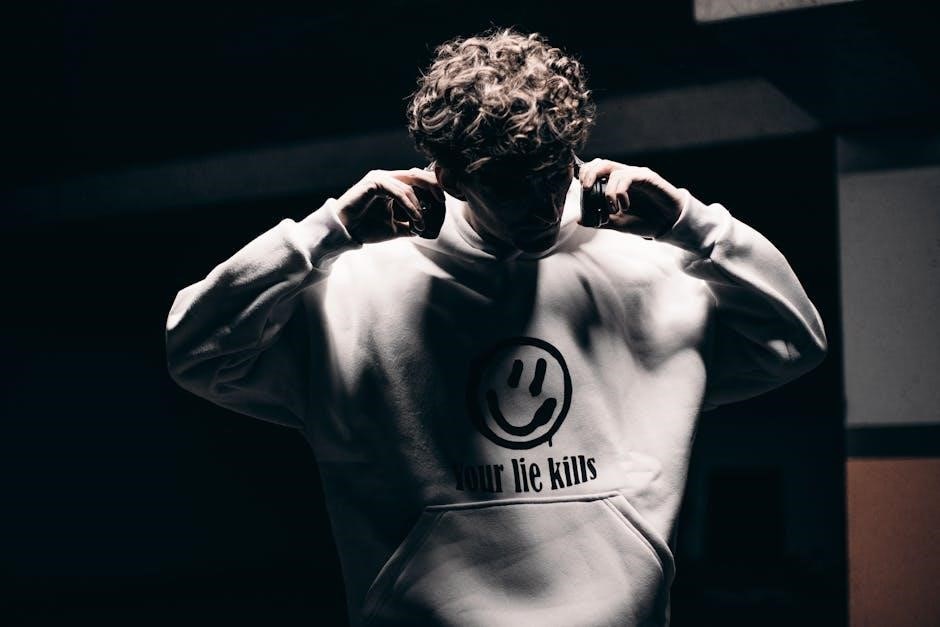Proper logo placement on hoodies is key to brand identity and style․ This guide explores optimal locations‚ design trends‚ and best practices for creating a cohesive‚ visually appealing look․
1․1 Importance of Logo Placement in Branding
Logo placement on hoodies plays a pivotal role in branding and visual identity․ A well-positioned logo enhances brand recognition‚ making it easier for customers to identify and remember the brand․ Strategic placement ensures the logo is visible without overwhelming the design‚ creating a balance between aesthetics and functionality․ This balance is crucial for conveying professionalism and style‚ which are essential for building trust and loyalty with consumers․ Additionally‚ thoughtful logo placement can elevate the perceived value of the product‚ making it more appealing to potential buyers․ By carefully selecting where to place the logo‚ brands can effectively communicate their message and leave a lasting impression․
Whether subtle or bold‚ the placement of a logo on a hoodie directly impacts how the brand is perceived․ It is a key element in creating a cohesive and memorable brand identity․
1․2 Brief Overview of Hoodie Design Trends
Hoodie design trends have evolved significantly‚ influenced by fashion‚ streetwear‚ and branding needs․ Modern hoodies often feature minimalist designs‚ oversized fits‚ and bold graphic elements․ The rise of streetwear culture has popularized unique logo placements‚ such as sleeves or the back‚ to create a striking visual impact․ Additionally‚ the demand for sustainable and eco-friendly materials has shaped design approaches‚ with brands incorporating organic fabrics and subtle branding․ Vintage-inspired designs‚ with distressed prints and retro logos‚ are also gaining traction․ These trends highlight the importance of aligning logo placement with the overall aesthetic to ensure a cohesive and stylish product․ By staying attuned to these design shifts‚ brands can create hoodies that resonate with current fashion sensibilities while maintaining their unique identity․
Understanding these trends is essential for designing hoodies that appeal to modern consumers and stand out in the market․
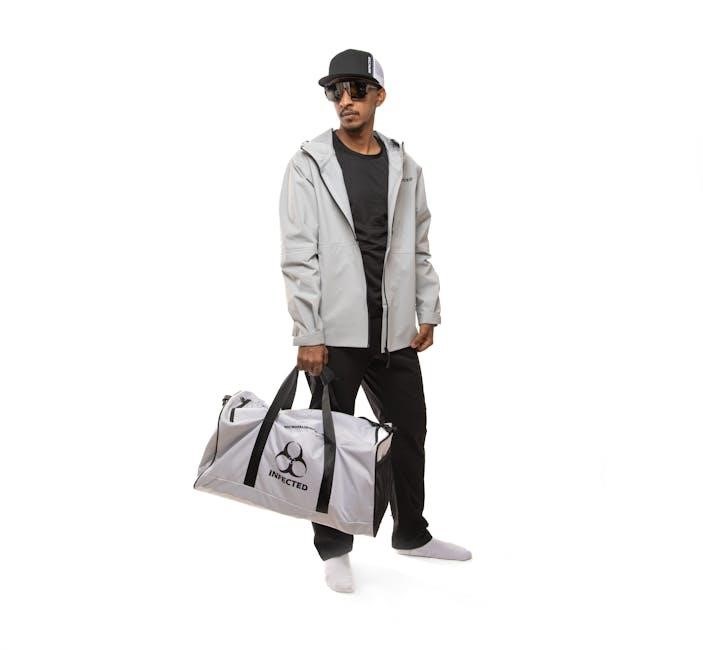
Popular Logo Placement Locations
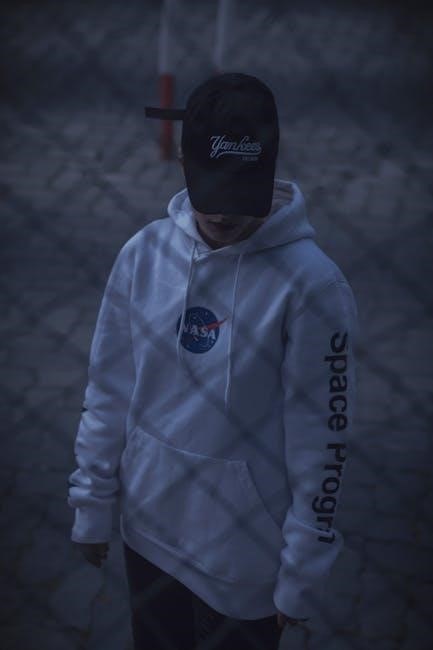
Logos on hoodies are often placed on the chest‚ back‚ sleeves‚ or hood for maximum visibility and style․ These locations enhance brand recognition while complementing the garment’s design․
2․1 Left Chest Placement: Subtle and Professional
Left chest placement is a timeless choice for hoodie logos‚ offering a subtle yet professional look․ Typically measuring around 3 inches in width‚ this placement ensures the logo is noticeable without being overpowering․ It’s ideal for minimalist designs‚ such as small icons or text‚ and works well for both casual and corporate branding․ Many brands pair this placement with a larger design on the back for a balanced look․ The left chest area is also popular in skater and streetwear communities‚ where understated branding is preferred․ However‚ it’s important to note that the logo may be partially hidden when the hoodie is worn under a jacket or zip-up․ Despite this‚ the left chest remains a versatile and elegant option for logo placement‚ suitable for a wide range of styles and industries․
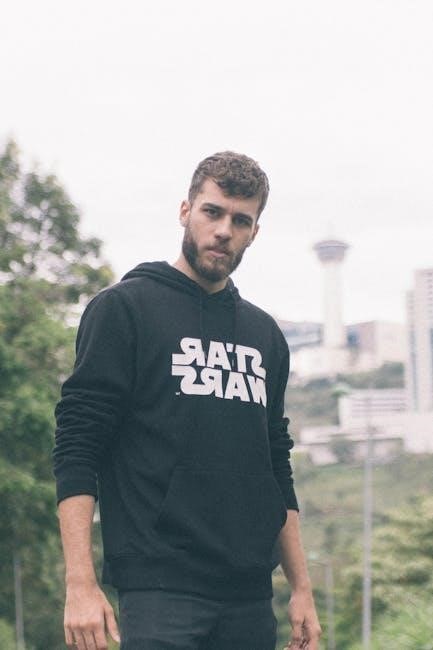
2․2 Back Logo Placement: Maximum Visibility
Back logo placement is ideal for making a bold statement and ensuring maximum visibility․ This large‚ open area allows for detailed designs and is perfect for showcasing intricate graphics or text․ Measuring up to 10×6 inches‚ it’s the largest printable space on a hoodie‚ making it a favorite for streetwear brands and sports teams․ The back placement is particularly effective for logos that need to stand out‚ as it’s highly noticeable when worn․ It’s also a popular choice for events or promotions where brand visibility is crucial․ However‚ designs here should be simple enough to remain legible from a distance․ This placement works well with contrasting colors to enhance visibility․ Whether for fashion or branding‚ the back of the hoodie offers a canvas for impactful designs that capture attention effortlessly․
2․3 Sleeve Logo Placement: Unique and Creative
Sleeve logo placement offers a unique and creative way to showcase your brand․ This area provides a subtle yet distinctive space for smaller logos or symbols‚ adding a touch of elegance to your hoodie design․ Typically placed 1-2 inches above the cuff‚ sleeve logos are ideal for complementary branding‚ allowing the primary logo to take center stage elsewhere․ This placement works well for minimalist designs‚ ensuring the logo remains visible without overwhelming the overall aesthetic․ It’s a popular choice for streetwear and fashion brands aiming for a modern‚ edgy look․ Sleeve logos also create a cohesive design when paired with other placements like the chest or back․ To ensure readability‚ keep the design simple and avoid overly detailed graphics․ This placement is perfect for adding an extra layer of creativity to your hoodie while maintaining balance and style․
2․4 Hood Logo Placement: Stylish and Functional
Hood logo placement is a stylish and functional way to showcase your brand․ Positioned on the front of the hood‚ this placement is both visually striking and practical․ When the hood is down‚ the logo remains visible‚ creating a modern and trendy look․ However‚ when the hood is up‚ the logo may appear slightly stretched or folded‚ requiring careful design consideration․ To address this‚ some designers opt for a smaller logo or a complementary “yolk” logo above the main design․ This placement is ideal for bold branding while maintaining the hoodie’s functionality․ The logo size should be proportional to the hood’s space‚ typically ranging from 6 to 10 inches wide․ Hood logo placement is perfect for streetwear‚ sports teams‚ and brands seeking a dynamic‚ eye-catching design that stands out while staying true to the garment’s purpose․
2․5 Front Logo Placement: Bold and Eye-Catching
Front logo placement is a powerful way to make a bold statement with your hoodie design․ Positioned in the center of the chest or slightly higher‚ this placement ensures maximum visibility and immediate brand recognition․ A front logo is often larger than other placements‚ typically ranging from 8 to 12 inches wide‚ making it a focal point of the garment․ This placement works well for simple‚ high-contrast designs that stand out against the hoodie’s fabric․ However‚ it’s important to balance the size and detail to avoid overwhelming the viewer․ Pairing a front logo with minimalistic elements or complementary designs on other areas‚ like the sleeves‚ can create a cohesive look․ For brands aiming to make a strong visual impact‚ front logo placement is an excellent choice‚ offering both style and functionality while ensuring your brand is front and center․ This placement is particularly popular in streetwear and fashion brands․
2․6 Right Chest Placement: Balanced and Symmetrical
Right chest placement offers a balanced and symmetrical alternative to the traditional left chest design․ Positioned similarly to the left chest but on the opposite side‚ this placement provides a clean and professional look while maintaining visibility․ The right chest area is ideal for smaller logos or minimalist designs‚ typically measuring 2 to 4 inches in width․ This placement works well for brands seeking a subtle yet noticeable presence․ It pairs nicely with additional designs on the back or sleeves‚ creating a cohesive and polished aesthetic․ The right chest placement is also practical‚ as it avoids obstruction when wearing a jacket or zip-up hoodie․ For those looking for a modern twist on classic logo positioning‚ the right chest offers a sleek and sophisticated option that complements both casual and formal apparel designs․ This placement is particularly favored by brands aiming for a contemporary‚ balanced look․
Design Considerations for Logo Placement
Effective hoodie logo placement requires careful consideration of size‚ color‚ and alignment to ensure a balanced‚ visually appealing design․ Proper proportions and color coordination enhance readability and aesthetic harmony‚ ensuring your brand stands out․
3․1 Size and Proportion of the Logo
The size and proportion of your logo play a crucial role in its visibility and aesthetic appeal on a hoodie․ A logo that is too large can overwhelm the design‚ while one that is too small may be easily overlooked․ The optimal size depends on the placement location‚ with chest logos typically ranging from 3 to 4 inches in width and back logos often being larger‚ around 10 to 12 inches wide‚ for maximum visibility․ Ensure the logo proportions are balanced with the hoodie’s dimensions to avoid a cluttered or disproportionate look․ Additionally‚ consider the fabric type and printing technique‚ as certain methods may require specific sizing adjustments․ Proper scaling ensures readability and maintains a professional appearance‚ making your brand stand out effectively․ Always review mockups to confirm the logo’s size and placement before production․
3․2 Color Coordination with Hoodie Fabric
Color coordination between the logo and hoodie fabric is essential for a polished and professional appearance․ The logo should contrast sufficiently with the hoodie’s color to ensure visibility and readability․ Neutral tones like black‚ white‚ and gray are versatile and pair well with most hoodie colors․ Bold and vibrant hues can create a striking visual impact but require careful consideration to avoid clashing․ For example‚ dark-colored hoodies are ideal for metallic or bright logos‚ while light-colored hoodies work best with subtle‚ muted tones․ Additionally‚ the fabric’s texture and color depth can affect how the logo appears‚ so it’s important to test samples․ Proper color matching enhances brand recognition and ensures the design remains cohesive․ Always consider the target audience and brand identity when selecting colors for the logo and hoodie combination to create a harmonious and appealing design․ This step is crucial for achieving a professional and stylish final product․
3․3 Alignment and Symmetry in Logo Placement
Proper alignment and symmetry are critical for a professional and visually appealing logo placement on hoodies․ The logo should be centered and evenly spaced relative to the hoodie’s design elements‚ such as the chest area or sleeves․ For chest logos‚ aligning the center of the logo with the zipper or button placket ensures a balanced look․ On the back‚ the logo should be centered horizontally and placed approximately 5-7 inches below the neckline for optimal visibility․ Symmetry is particularly important for logos on the sleeves‚ where they should be aligned with the seam for a clean appearance․ Using measurement guides or software can help achieve precise alignment․ Proper alignment enhances the aesthetic appeal of the hoodie and reinforces the brand’s professional image․ Ensuring symmetry in logo placement creates a cohesive and polished final product that resonates with the target audience․ Alignment and symmetry are key to making the logo stand out effectively․
3․4 Font and Graphics: Readability and Aesthetics
Font and graphics play a crucial role in ensuring readability and visual appeal of hoodie logos․ The chosen font should be clear and legible‚ even from a distance‚ avoiding overly intricate designs that may blur or lose detail․ Graphics should be simple yet impactful‚ with high contrast between the logo and the hoodie fabric to enhance visibility․ For embroidered logos‚ bold lines and solid colors work best‚ while screen printing allows for finer details․ The size of the font and graphics should proportionally match the placement area‚ ensuring the design doesn’t overwhelm the garment․ Proper spacing between text and graphics is essential for a polished look․ Additionally‚ color coordination with the hoodie’s fabric ensures the logo stands out without clashing․ Balancing readability with aesthetics creates a professional and visually appealing logo placement that effectively communicates the brand’s identity․
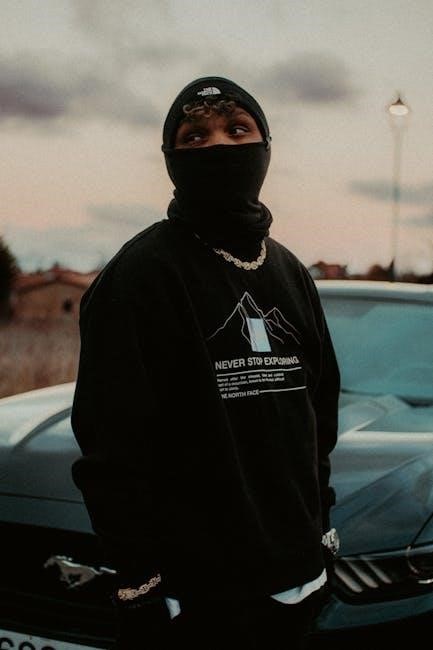
Tools and Software for Logo Design
Graphic design software like Adobe Illustrator and Photoshop enable precise logo creation․ Mockup generators help visualize placements‚ while measurement guides ensure accurate positioning for professional results․
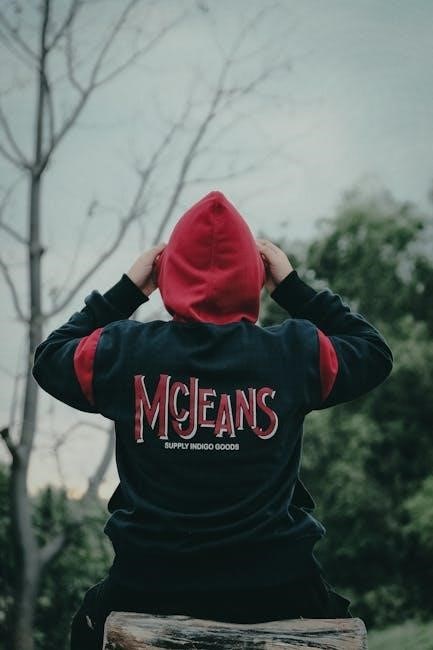
4․1 Graphic Design Software for Logo Creation
Graphic design software is essential for creating professional logos․ Adobe Illustrator and Photoshop are industry standards‚ offering advanced tools for vector graphics and detailed editing․ Illustrator excels in creating scalable vector designs‚ perfect for large hoodie logos‚ while Photoshop allows for intricate layering and color adjustments․ For those less experienced‚ Canva provides user-friendly templates and customizable options․ These tools enable designers to experiment with various fonts‚ colors‚ and layouts‚ ensuring logos are visually appealing and brand-consistent․ Additionally‚ they support exporting designs in high-resolution formats‚ crucial for printing on hoodies․ By leveraging these software options‚ creators can craft logos that stand out and align with their brand identity‚ whether for fashion‚ sports teams‚ or corporate apparel․
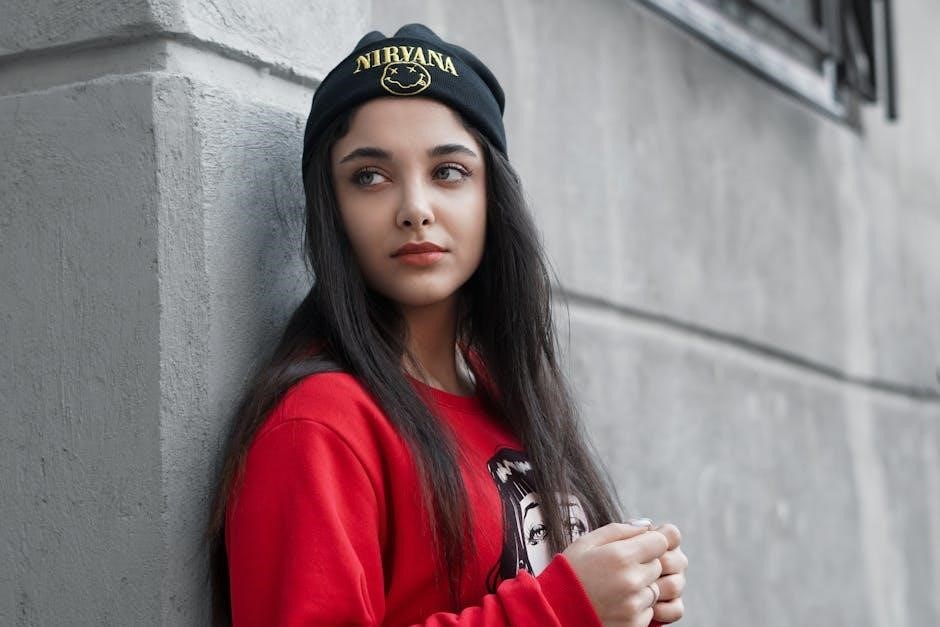
4․2 Mockup Generators for Visualizing Logo Placement
Mockup generators are invaluable tools for previewing logo placement on hoodies․ Platforms like Placeit‚ Smartmockups‚ and Printful allow designers to create realistic‚ 3D-rendered previews of their designs․ These tools provide templates for various hoodie styles‚ enabling precise visualization of how logos will look on different fabrics and colors․ By simulating real-world placement‚ mockups help ensure designs are proportionate and visually appealing․ They also simplify the process of testing multiple logo positions‚ such as chest‚ sleeve‚ or back placements‚ without requiring physical prototypes․ This saves time and resources while ensuring the final product meets branding and aesthetic goals․ Mockup generators are especially useful for presenting ideas to clients or teams‚ offering a clear and professional way to communicate design concepts before production begins․
4․3 Measurement Guides for Accurate Placement
Measurement guides are essential for ensuring precise logo placement on hoodies․ These guides typically outline standard dimensions for common placement areas‚ such as the chest‚ sleeves‚ and back․ For example‚ a left chest logo is often placed 1 inch below the collar and centered‚ with a typical size of 3-4 inches wide․ Sleeve logos are usually smaller‚ around 2-3 inches‚ and positioned 2-3 inches above the cuff․ Back logos‚ being the largest‚ can span up to 10 inches wide․ Using a ruler or digital template ensures symmetry and alignment․ Proper measurement prevents issues like uneven spacing or distortion․ Brands should also consider fabric type‚ as stretchy materials may require slightly adjusted placements․ Adhering to these guides ensures a professional finish and enhances the overall aesthetic of the design․ Accurate measurements are crucial for achieving a polished‚ brand-ready appearance․
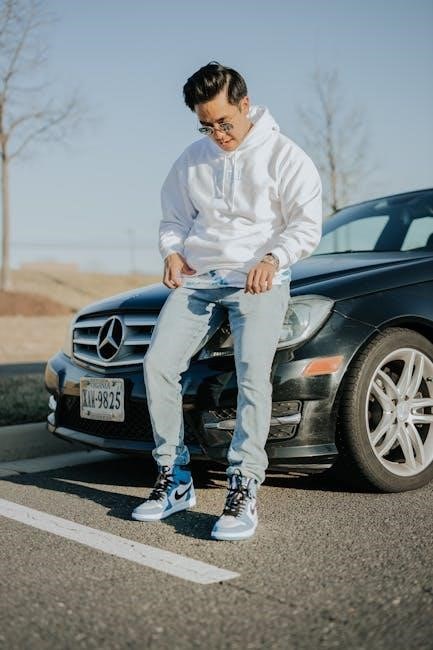
Printing Techniques for Hoodie Logos
Exploring various printing techniques like screen printing‚ embroidery‚ heat transfer‚ and DTG ensures vibrant‚ durable‚ and high-quality logo application on hoodies‚ catering to different design needs and preferences․
5․1 Screen Printing: Durability and Vibrancy
Screen printing is a popular technique for hoodie logos‚ offering exceptional durability and vibrant colors․ It involves pushing ink through a stencil onto the fabric‚ creating bold‚ long-lasting designs․ This method is ideal for large‚ detailed logos and bulk orders‚ as it ensures consistent quality․ Screen printing works well on various fabrics‚ including cotton and blends‚ making it a versatile choice․ To achieve the best results‚ high-quality screens and ink are essential․ Proper curing of the ink ensures the design withstands repeated washing without fading․ For vibrant colors‚ especially on dark fabrics‚ additional steps like flash drying may be necessary․ Screen printing is widely used for sports teams‚ streetwear brands‚ and promotional apparel due to its durability and eye-catching appeal․ It’s a reliable option for creating professional-looking logos that maintain their integrity over time․
5․2 Embroidery: Premium and Long-Lasting
Embroidery is a high-end technique for logo placement‚ offering a premium and durable finish․ It involves stitching the logo directly into the fabric using high-quality threads‚ creating a dimensional and sophisticated look․ This method is ideal for small to medium-sized logos‚ particularly on areas like the chest‚ sleeves‚ or back․ Embroidery is highly resistant to wear and tear‚ making it a great choice for long-term branding․ It’s commonly used for corporate apparel and sports teams‚ as it conveys professionalism and elegance․ The process ensures vibrant colors and intricate details‚ with minimal fading over time․ For hoodies‚ embroidery works best on thick fabrics like fleece or cotton blends․ Proper thread quality and stitching techniques are crucial for a polished appearance․ Embroidery is a timeless option for businesses seeking a classic‚ high-quality logo presentation that withstands the test of time․
5․3 Heat Transfer: Cost-Effective and Versatile
Heat transfer printing is a versatile and budget-friendly method for hoodie logo placement․ It involves transferring a design onto the fabric using heat and pressure‚ making it ideal for full-color logos and intricate details․ This technique is particularly suitable for small to medium-sized designs and works well on various fabrics‚ including cotton‚ polyester‚ and blends․ Heat transfer is widely used for its flexibility‚ allowing logos to be placed on the chest‚ back‚ sleeves‚ or even the hood․ The process ensures vibrant colors and sharp details‚ with minimal equipment required․ While it may not be as durable as embroidery or screen printing‚ heat transfer is a great option for businesses seeking affordable‚ high-quality logo placement with quick turnaround times․ It’s perfect for startups‚ promotional items‚ or seasonal designs․
5․4 DTG (Direct-to-Garment) Printing: High-Resolution Details
Direct-to-Garment (DTG) printing is a cutting-edge technique that offers high-resolution details for hoodie logo placement․ Unlike traditional methods‚ DTG prints ink directly onto the fabric‚ creating vibrant‚ photorealistic designs․ This method is ideal for intricate graphics‚ gradients‚ and small text‚ making it a favorite for fashion brands and streetwear․ DTG printing is versatile and works well on both light and dark fabrics‚ though it requires pre-treatment for darker materials․ The process is eco-friendly and cost-effective for small to medium-sized orders‚ offering quick turnaround times․ However‚ it may not be as durable as screen printing or embroidery for heavy-use items․ DTG is perfect for businesses seeking detailed‚ high-quality logos without compromising on design complexity․ Its ability to produce sharp‚ vivid images ensures the logo stands out‚ making it a modern choice for custom hoodie designs․

Case Studies and Examples
Explore real-world examples of hoodie logo placement from sports teams‚ streetwear brands‚ and corporate apparel․ Learn how successful brands achieve impactful designs that enhance identity and style․
6․1 Successful Brand Implementations of Logo Placement
Brands like Nike‚ Adidas‚ and Supreme have mastered logo placement on hoodies to enhance brand identity․ For instance‚ Nike often uses the left chest area for subtle branding‚ while Adidas prefers bold back logos for maximum visibility․ Supreme‚ known for streetwear‚ opts for sleeve placements to add a unique touch․ These strategies ensure logos stand out without overwhelming the design․ Similarly‚ corporate brands embed logos on the front or hood for professional appeal․ Successful implementations balance aesthetics with functionality‚ ensuring the logo complements the hoodie’s style․ These examples highlight how thoughtful placement can elevate brand recognition and create a lasting impression․
By studying these cases‚ designers can gain insights into effective logo positioning that aligns with their brand’s image and target audience․
6․2 Examples from Sports Teams and Apparel Brands
Sports teams and apparel brands often use hoodie logo placement to enhance brand visibility and appeal․ For instance‚ NBA and NFL teams frequently feature bold logos on the back of hoodies for maximum visibility during games and casual wear․ Apparel brands like Champion and The North Face often place smaller logos on the left chest for a subtle‚ professional look․ Streetwear brands such as Stüssy and Off-White use creative placements‚ like sleeves or hoods‚ to stand out․ These examples demonstrate how strategic logo placement can align with a brand’s identity and target audience․ By analyzing these cases‚ designers can learn how to effectively integrate logos into hoodie designs while maintaining style and functionality․
Such implementations not only boost brand recognition but also contribute to the overall aesthetic of the garment․
6․3 Creative Uses in Streetwear and Fashion
Streetwear and fashion brands have redefined hoodie logo placement with bold‚ innovative designs․ Brands like Stüssy and Off-White often feature oversized logos across the back or sleeves for a striking visual impact․ Some designers experiment with asymmetrical placements‚ such as diagonal or overlapping logos‚ to create a modern‚ edgy look․ Fashion labels like Supreme and Balenciaga use contrasting colors and geometric shapes to make their logos stand out․ These creative approaches not only enhance brand visibility but also add an extra layer of style to the hoodie․ By pushing boundaries in logo placement‚ streetwear and fashion brands continue to inspire new trends in apparel design‚ making hoodies a canvas for self-expression and artistic statement․
Such designs often become iconic‚ resonating with fashion-forward audiences worldwide․
6․4 Corporate Branding in Custom Hoodies
Custom hoodies are a popular choice for corporate branding‚ offering a practical yet stylish way to promote a company’s identity․ Businesses often opt for subtle placements‚ such as the left chest or back‚ to ensure the logo is visible without being overly flashy․ This approach aligns with professional aesthetics while maintaining comfort and functionality․ Corporations also use hoodies for employee apparel‚ creating a unified look during events or in the workplace․ The placement of logos on hoodies for corporate use typically emphasizes simplicity and legibility‚ ensuring the brand is easily recognizable․ This method not only fosters team spirit but also serves as a versatile marketing tool‚ blending seamlessly into both casual and professional settings․
Such branding strategies make custom hoodies a timeless choice for companies seeking to promote their identity in a modern‚ relatable way․
Proper logo placement enhances both brand visibility and hoodie aesthetics․ Consider size‚ color‚ and position to create a balanced‚ visually appealing design that aligns with your brand identity․
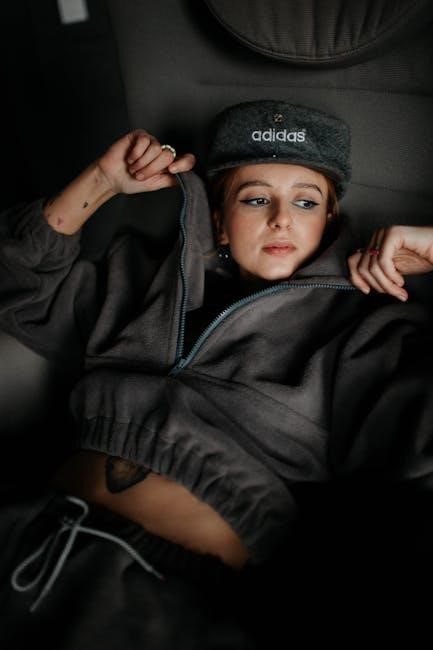
7․1 Recap of Key Logo Placement Principles
When designing hoodie logos‚ balance is crucial․ Ensure the logo size complements the garment without overwhelming it․ Color coordination with the fabric maintains a cohesive look․ Alignment and symmetry are key for a polished appearance․ Choosing the right font and graphics ensures readability and visual appeal․ Proper placement enhances brand visibility and functionality‚ while considering current design trends keeps the look modern․ By focusing on these principles‚ you can create a design that resonates with your audience and elevates your brand identity effectively․
7․2 Best Practices for Choosing the Right Placement
Choosing the right logo placement on a hoodie involves balancing style‚ functionality‚ and brand visibility․ Start by considering the size and proportion of the logo relative to the garment․ Ensure the design is not oversized‚ as it may overwhelm the hoodie․ Opt for locations that align with the target audience’s preferences‚ such as the left chest for a subtle look or the back for maximum visibility․ Symmetry and alignment are crucial for a polished appearance․ Pair bold designs with neutral areas to avoid visual clutter․ Consider the hoodie’s intended use—casual‚ athletic‚ or corporate—to guide your placement decision․ Finally‚ test mockups on different hoodie styles to ensure the logo looks cohesive and appealing․ By prioritizing these factors‚ you can create a design that resonates with your audience and enhances your brand identity․
